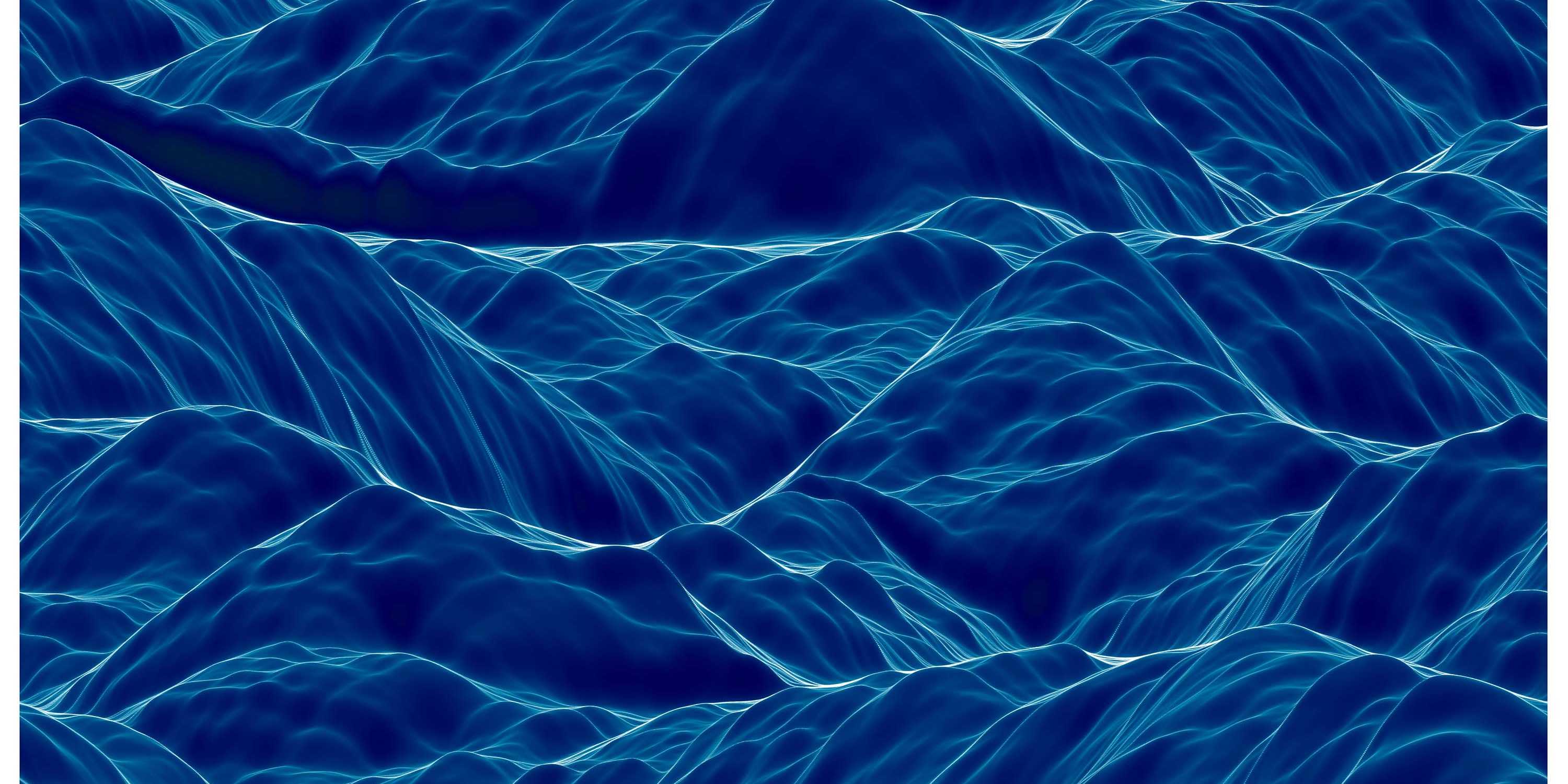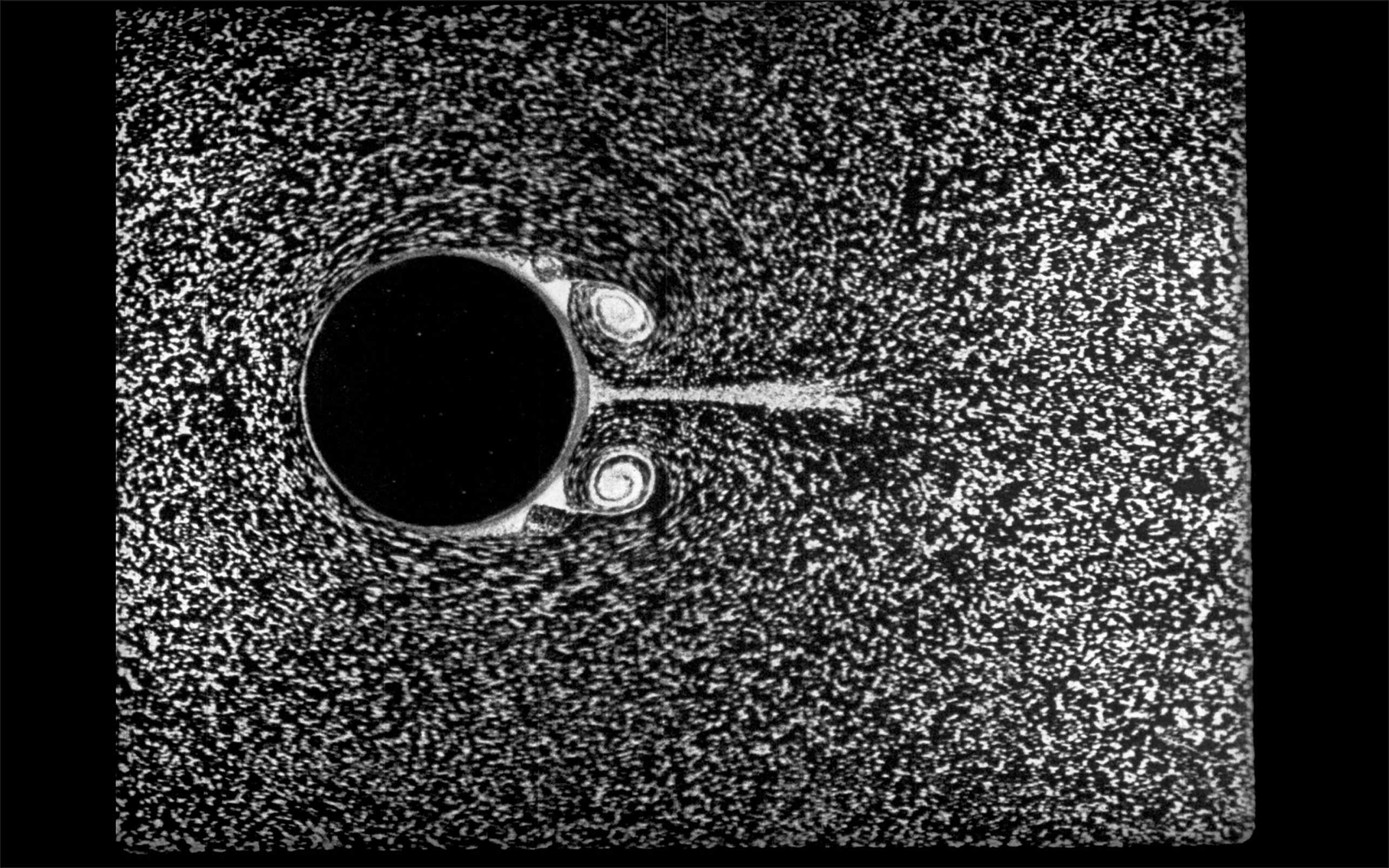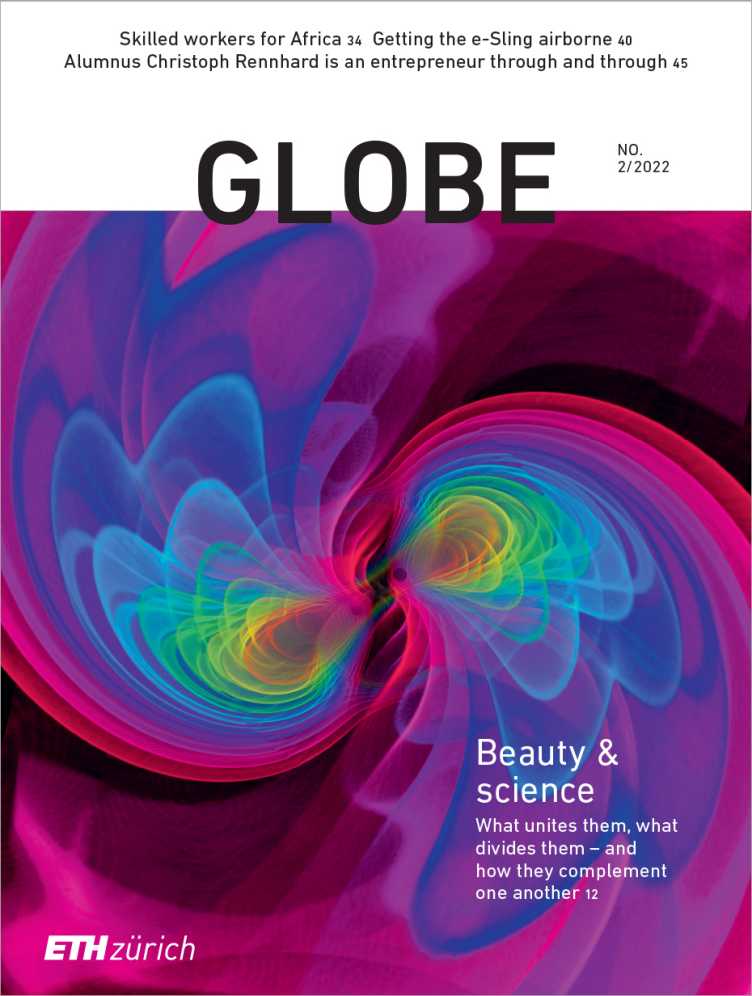The fascination of images
Images play an important role in science and science communication. They have always held a powerful appeal, but the means of producing them – and the notion of how they should reflect reality – continue to evolve over time.

Asked about the role that beauty plays in image-based science communication, Sarine Waltenspül and her research partner, Mario Schulze, confess a reluctance to use this term. Instead, the two image experts prefer to talk about the “desire for images” or the more general concept of aesthetics. “The term ‘beauty’ can easily come across as a universalising category,” they say. “Yet images are produced in a variety of contexts and are perceived and interpreted by different audiences.” In other words, they explain, we always need to ask who is looking at what, and in which timeframe and context.
The duo are currently applying this question to a film about fluid dynamics as part of their project “Film, Research, Fluidity”, which focuses on the epistemological implications, aesthetics and politics of moving images in the sciences. The project forms part of their fellowship at the Collegium Helveticum, an institution of ETH, the University of Zurich and Zurich University of the Arts, which encourages researchers to explore transdisciplinarity. Starting point of the project is a 1927 film entitled Entstehung von Wirbeln bei in Wasser bewegten Körpern (Production of vortices by bodies travelling in water) by Ludwig Prandtl, a German scientist who made several key contributions to fluid mechanics.

From lecture hall to film festival
“He harnessed the power of images and of moving images to show phenomena that could not be derived from the fluid dynamics model of the time,” says Schulze. “But he was also trying to make his lectures more interesting!” And he certainly succeeded. Prandtl screened his film at conferences all over the world, and its popularity continued to grow. Under National Socialism, the film was adapted into an educational film for university students; during the Cold War, it even made its way into school classrooms. By the 2000s, Prandtl’s film had shed its academic gown altogether and was appearing at film festivals celebrating experimental film and visual music.
“What we see again and again is how these moving images not only present scientific knowledge but also create moments of pure fascination,” says Waltenspül. Prandtl’s film offers an aesthetic all of its own. Employing a powerful light-dark contrast, it shows glittering particles set against a dark background and flowing around simple geometric bodies such as cylinders and pyramids. “The images are very abstract and clear, but they also have a kind of rhythm to them, almost a musicality,” she says. “They are precise and, in many cases, apply the golden ratio, which ties in with certain ideals of beauty.” This high degree of abstraction stems from the desire to achieve scientific objectivity, says Schulze, but it also helped the film connect with a variety of audiences.
Technology, objectivity and aesthetics

The functional aesthetics of Prandtl’s film corresponded to the scientific expectations of the age. As the techniques of photography and film began to emerge, there was a steady shift in the definition of scientific objectivity, says Schulze, referring to work by science historians Loraine Daston and Peter Galison. The goal of earlier scientific representations such as drawings and engravings was to offer a true depiction of nature and of natural beauty, with beauty and truth seen as inseparable companions. Artists and engravers allowed their aesthetic, artistic vision to colour their work. By contrast, the advent of photography and film showed how nature could be depicted in a true-to-life manner with an almost mechanical objectivity. “The question of how technology influences scientific thinking is one that arises in image production, too – and it’s one that we are currently exploring in regard to image-based virtual worlds,” says Waltenspül.
“Communication with images is more direct than communication with words.”Mario Schulze
The emergence of new image technologies also increased the ways in which science could be made accessible to a wider audience. “Communication with images is more direct than communication with words,” says Schulze. Images are part of the basic toolkit for popularising science; and, increasingly, aesthetic strategies such as attraction, beauty, novelty and surprise are deployed to capture people’s attention.
Hence the enthusiasm of science organisations such as the Swiss National Science Foundation and Germany’s Max Planck Society for competitions to find the best science images and for exhibitions to show the winning entries. Using images to popularise science may not be new, says Waltenspül, but it is becoming more common: “Today’s scientists rely more than ever on their ability to communicate and attract attention, not just within their own discipline but also across fields and with the general public.” Images are an excellent tool to achieve this, as Ludwig Prandtl was one of the first to appreciate.
About
Sarine Waltenspül is a Junior Fellow at the Collegium Helveticum. In 2021–22, she held the Chair of Media Aesthetics at the University of Basel on an interim basis. Prior to that, she co-led an SNSF project at Zurich University of the Arts (ZHdK), where she also lectured.
Mario Schulze is a Junior Fellow at the Collegium Helveticum. For the past year, he held the Chair of Media Aesthetics at the University of Basel on an interim basis. Prior to that, he was a postdoc at Zurich University of the Arts and Humboldt University of Berlin.

Comments
No comments yet